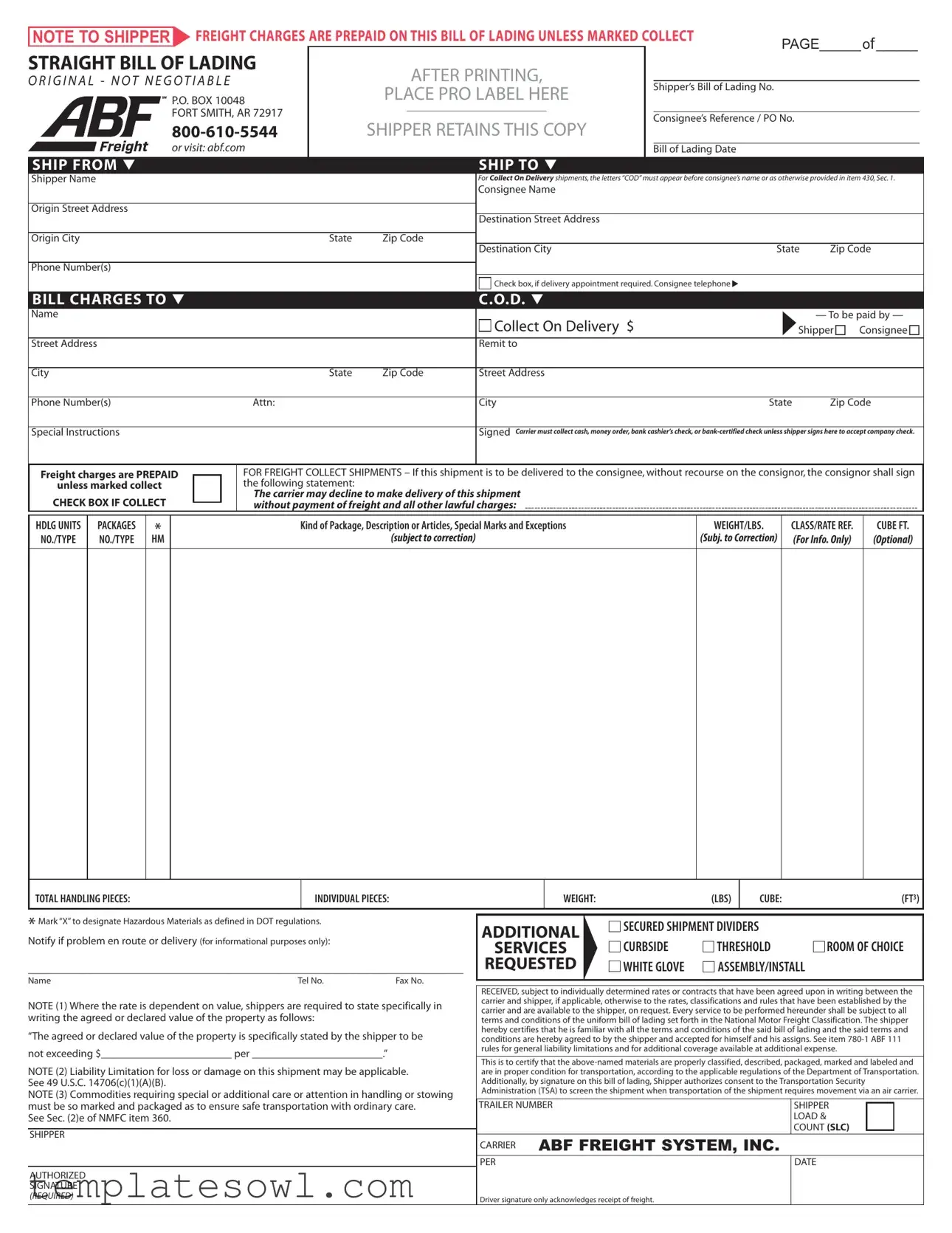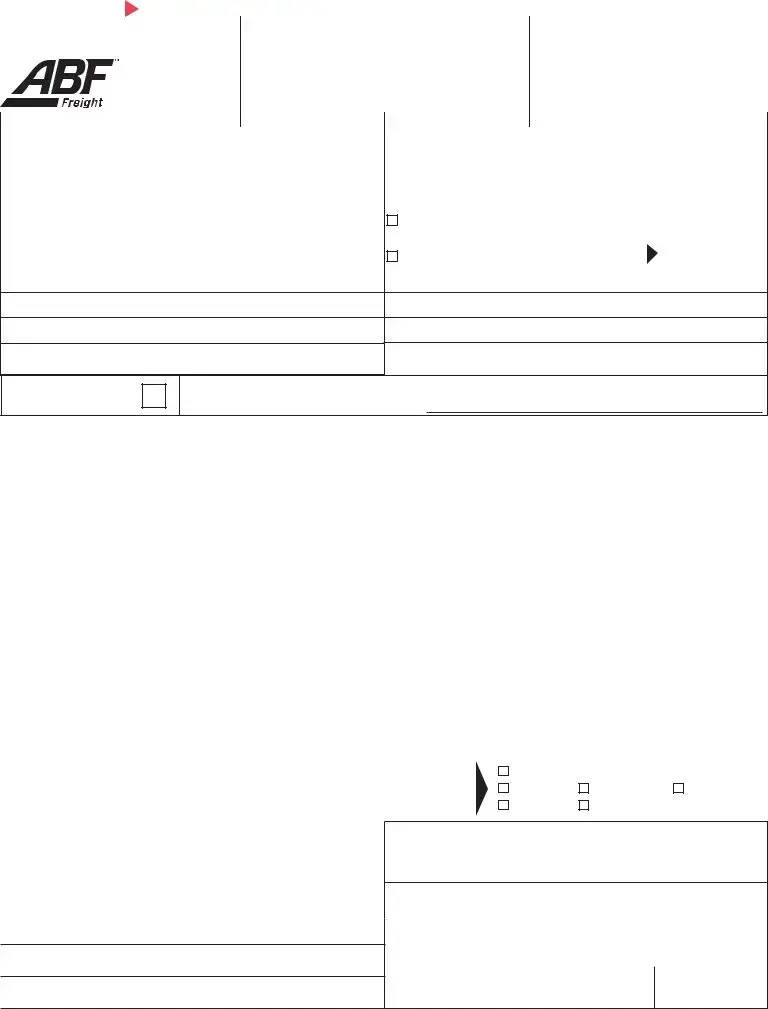Filing out the ABF Freight Bill of Lading may seem straightforward, but there are common mistakes that can create headaches later on. Let's dive into five of these pitfalls that shippers should be mindful of when completing this crucial document.
First, one of the most frequent errors is failing to specify the amount of freight charges correctly. Many people assume that all charges are prepaid unless marked as collect. However, it's essential to double-check this section. Misunderstanding this can lead to unwanted surprises for the consignee when they receive the bill, potentially delaying payment and shipment delivery.
Another prevalent mistake involves mislabeling shipments. Shippers often overlook the need to indicate whether their cargo includes hazardous materials. This can be a serious issue, as incorrect labeling can result in non-compliance with regulations. Always mark the appropriate boxes and provide accurate descriptions to ensure safe transport. It’s not just about following rules; it’s about keeping everyone safe during shipment.
Next, many individuals forget to include a contact number for the consignee or fail to clarify whether a delivery appointment is required. This information is vital for smooth logistics. Without it, the carrier may encounter delays in delivery or the consignee may miss receiving the items altogether. A simple check in this area can save a lot of trouble down the line.
Moreover, another common oversight arises when shippers neglect to state the declared value of the shipment. According to regulations, this information is often necessary for the carrier to know the value of what they are transporting. Not providing this can limit the shipper's ability to file a claim in case of loss or damage. It's always a good measure to clearly mention this information to avoid future complications.
Finally, many shippers overlook signing the authorization section. This signature is not only a formality but a requirement that confirms the shipper agrees with the terms and conditions laid out. Without it, the entire bill of lading can be deemed invalid, complicating matters for both the shipper and the carrier. Ensuring that you sign this document helps facilitate a smoother shipping process.
Being thorough and careful when filling out the ABF Freight Bill of Lading can make all the difference. By avoiding these common mistakes, you can enhance your shipping experience and contribute to a more efficient logistics operation.

